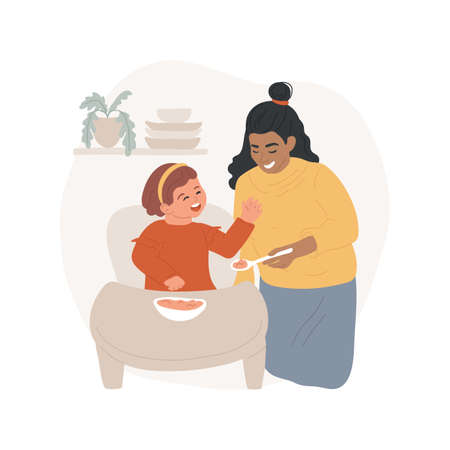Understanding Forgiveness within British Blended Families
Blended families across the UK are as diverse as the landscapes that stretch from Cornwall to the Scottish Highlands. As step-parents, step-siblings, and biological relatives come together under one roof, unique emotional dynamics naturally arise. Forgiveness becomes not just a virtue, but a necessity for harmony and growth. British culture places a particular emphasis on politeness, understated emotions, and maintaining a “stiff upper lip.” Yet, beneath this reserved exterior, members of blended families often grapple with feelings of loss, loyalty conflicts, and unspoken resentment.
The process of forgiveness in these settings is rarely straightforward. Children may struggle to accept new parental figures, while adults navigate the delicate balance between respecting past relationships and nurturing new bonds. Extended family—grandparents, aunts, uncles—bring their own expectations and opinions into the mix, influenced by traditions and regional values. The result is a complex web of interactions where forgiveness must be actively cultivated rather than assumed.
Moreover, British blended families frequently encounter societal pressures to appear seamlessly integrated. This expectation can make it difficult to openly address misunderstandings or hurts. Instead, grievances might linger in the background, subtly shaping daily interactions. Understanding these cultural nuances is essential for fostering genuine forgiveness—a process that involves honest communication, empathy for different perspectives, and a willingness to let go of old narratives.
In this context, exploring alternative approaches such as Feng Shui offers an opportunity to reimagine forgiveness not only as an emotional journey but also as a spatial one. By recognising the intricate layers of British family life and the silent challenges faced behind closed doors, we set the stage for transformation rooted in both tradition and mindful adaptation.
2. An Introduction to Feng Shui: Principles and Purpose
Rooted in ancient Chinese wisdom, Feng Shui is the art of arranging spaces to promote harmony, wellbeing, and balance within the home. At its core, Feng Shui seeks to optimise the flow of energy—or chi—by thoughtfully organising objects, furniture, and even colours. This philosophy is especially meaningful in blended British families, where creating an inclusive and nurturing environment can often be challenging. By integrating Feng Shui’s key principles into British homes, families can foster a sense of calm, clarity, and openness, paving the way for forgiveness and emotional healing.
The Pillars of Feng Shui Philosophy
Feng Shui is guided by several foundational concepts that are universally applicable yet easily tailored to fit local British culture and domestic architecture. These principles include:
| Principle | Description | Relevance for British Families |
|---|---|---|
| Chi (Energy Flow) | The invisible life force that should move freely through the home. | Encourages clear pathways in hallways and shared spaces to support open communication. |
| Yin & Yang (Balance) | The dynamic balance between opposing forces. | Blending traditions and personalities in shared living areas while respecting privacy and individuality. |
| The Five Elements | Wood, Fire, Earth, Metal, and Water—each representing different qualities. | Incorporating natural materials, colours, and textures that reflect both heritage and modernity in UK homes. |
| The Bagua Map | A spatial map used to identify energy centres in a home. | Applying the bagua to highlight areas like ‘Family’, ‘Health’, or ‘Relationships’ in classic British floorplans. |
Cultural Adaptation for British Households
While Feng Shui’s roots lie in Eastern philosophy, its essence resonates deeply with British values of comfort, hospitality, and respect for personal space. Victorian terraces or modern flats alike can benefit from decluttering rituals and mindful arrangement—think inviting entryways free from shoes or coats piled high. Such small shifts not only enhance aesthetic appeal but also help release lingering tensions that can arise when merging family stories and traditions under one roof.
A Supportive Framework for Letting Go
By embracing Feng Shui principles within the context of British homes, blended families find a practical yet gentle approach to transformation. The careful curation of space becomes more than just interior design; it evolves into a form of self-care and collective healing—an intentional foundation on which forgiveness can flourish naturally amidst daily life’s comings and goings.

3. Cultivating Forgiveness through Spatial Storytelling
Blended families in Britain often carry a tapestry of histories and emotions, making the home environment pivotal for healing and renewal. By embracing Feng Shui principles, families can reimagine shared spaces as vessels for forgiveness, using spatial storytelling to symbolise unity and fresh beginnings. Start with the heart of the British home—the living room. Opt for soft, inviting furnishings in heritage colours like sage green or gentle oatmeal, echoing both comfort and tradition. Arrange seating in a circular or semi-circular fashion to encourage open dialogue and visual connection, subtly fostering inclusivity and mutual understanding.
Incorporate elements that resonate with British sensibilities—think textured throws in herringbone or tartan, pottery from local artisans, and classic wooden accents that reflect timeless design. Position family photographs or cherished objects together on a central console or mantelpiece. This not only honours each member’s story but also visually weaves individual narratives into a shared future, signalling acceptance and collective hope.
The Power of Transitional Spaces
Corridors and entryways play a significant role in Feng Shui, acting as energetic bridges between past wounds and new beginnings. In the context of British homes—often defined by their charming yet compact hallways—use soft lighting, mirrors with wooden frames, and botanical prints to create a gentle transition into communal areas. These choices cleanse lingering tension and welcome all family members with warmth and openness.
Nurturing Calm in Shared Bedrooms
Bedrooms shared by siblings from different backgrounds benefit from soothing palettes such as duck egg blue or warm taupe, paired with natural textures like linen or wool. Place beds so that everyone has a clear view of the door without being directly aligned—this subtle Feng Shui adjustment cultivates security while respecting personal space, an important consideration in blended households.
Celebrating Forgiveness through Ritual Objects
Finally, consider introducing symbolic items meaningful within both Feng Shui and British culture—a small bowl of pebbles gathered from the seaside (representing grounding), or a vintage clock set intentionally to mark a “new time” for the family. Through these thoughtful touches, your home becomes more than shelter; it transforms into a narrative canvas where forgiveness is not only fostered but celebrated.
4. Practical Feng Shui Tips for Letting Go
Letting go of emotional baggage within a blended British family can feel overwhelming, but small environmental shifts can nurture meaningful change. By harnessing Feng Shui principles, you can gently transform your shared spaces to support forgiveness and fresh beginnings.
Declutter Communal Spaces
In British homes, communal areas such as the lounge, kitchen, or dining room often become repositories for memories and tensions alike. Begin by decluttering these shared environments—remove items that carry negative associations or remind family members of past discord. Use charity shops or car boot sales to responsibly rehome belongings. A clear space invites a clearer mind and paves the way for open-hearted interactions.
Rearrange for Harmony
Reposition furniture to foster connection rather than division. Arrange seating in a circular or semi-circular pattern to encourage conversation and equality among all family members. Ensure passageways are unobstructed to symbolise smooth transitions and unblocked communication.
Area |
Suggested Change |
Feng Shui Benefit |
|---|---|---|
| Lounge | Sofas facing each other; coffee table with rounded edges | Promotes dialogue and softens tensions |
| Kitchen | Organised cupboards; visible family calendar | Reduces stress, enhances cooperation |
| Hallway | Uncluttered shoe rack; welcoming artwork | Encourages positive arrivals and departures |
Introduce Calming Motifs and Colours
The British love for understated elegance pairs beautifully with Feng Shui’s calming motifs. Incorporate gentle hues such as sage green, dove grey, or soft blue in soft furnishings and décor—these colours evoke peace and renewal. Add natural elements like potted lavender or fern plants to purify the air and soothe restless energy.
Tactile Reminders of Forgiveness
Create a subtle “letting go” ritual by placing a bowl of smooth pebbles near the entrance. Each pebble represents a worry or grievance; family members can symbolically “leave” their burdens behind as they enter the home, fostering an atmosphere of acceptance day by day.
By mindfully adapting your living space in these ways, you create an environment where forgiveness feels not only possible but gently encouraged, allowing your blended British family to move forward together with lightness and hope.
5. Bridging Traditions: Blending British Heritage with Eastern Wisdom
Uniting the cherished customs of British family life with the mindful practices of Feng Shui offers a gentle, creative path for blended families seeking harmony and forgiveness. At its heart, this fusion is about respecting both heritage and new beginnings—making space for everyone’s story within the home. Start by recognising the significance of communal spaces such as the sitting room or dining area, where British families often gather for tea or Sunday roast. Infuse these traditions with Feng Shui’s emphasis on clear pathways and uncluttered surfaces to encourage open conversation and free-flowing energy. For example, arrange armchairs and sofas in a circular layout, promoting inclusivity and the natural exchange of stories, laughter, and reconciliation.
Celebrating Rituals with Intention
British rituals such as afternoon tea or Christmas crackers can be elevated through Feng Shui’s guidance. Place your tea set near a window to welcome natural light and positive chi, while using round tables to symbolise unity. Incorporate colours like calming greens or soft blues—echoing both British countryside charm and Feng Shui’s harmonious palette—to soothe tensions and invite peace.
Honouring Ancestry, Embracing Renewal
Display treasured family heirlooms or photographs along the “Family” sector (East) according to the Bagua map, blending ancestral pride with Eastern wisdom. Balance these with fresh flowers or living plants—a nod to both English gardens and Feng Shui’s love for life energy—signifying growth beyond past hurts. This respectful curation allows each family member to see themselves reflected in the home’s narrative while embracing collective progress.
Creating Welcoming Thresholds
The British tradition of greeting guests warmly at the door pairs beautifully with Feng Shui’s focus on an inviting entrance. Keep porches tidy, add a cheerful doormat bearing a welcoming phrase, and use fragrant herbs like lavender or rosemary in nearby planters. These small touches blend local culture with Eastern principles, ensuring that every arrival feels like a fresh opportunity for connection, understanding, and letting go.
By weaving together age-old British customs with the mindful flow of Feng Shui, blended families can craft spaces that are not only culturally authentic but also profoundly healing—a home where forgiveness is fostered naturally in every shared moment.
6. Celebrating Progress and Remaining Connected
Recognising Forgiveness Milestones
Forgiveness, much like a carefully designed room, takes shape gradually—each small shift matters. In blended British families, it’s vital to acknowledge these moments of progress. Whether it’s a first family meal shared without tension or a heartfelt conversation that clears the air, pausing to appreciate these milestones can lift the collective spirit. Consider marking achievements with simple rituals: a cuppa together in your favourite nook, an afternoon walk through a local park, or a handwritten note left on a bedside table. These acts reinforce the positive energy you’ve cultivated through Feng Shui principles and invite more harmony into your home.
Maintaining Ongoing Communication
Communication is the thread that binds every element of a harmonious space. For blended families, establishing regular check-ins—perhaps over Sunday roast or during an evening stroll—creates opportunities for honest dialogue. Encourage everyone to share their feelings openly, using gentle language and active listening skills rooted in British courtesy and respect. When challenges arise, approach them as a team; remember, just as clutter can disrupt flow in a living room, unresolved misunderstandings can block emotional energy in your relationships. Keep lines of communication open to ensure continued growth and connection.
Honouring the Journey Together
The path toward unity in a blended family is uniquely British—a blend of tradition and adaptation, tea and transformation. Honour your shared journey by celebrating both individual contributions and collective achievements. Create family traditions that reflect your household’s personality: perhaps decorating your living space together each season, planting a small garden as a symbol of new beginnings, or hosting regular family nights featuring classic British films or board games. By consciously weaving moments of togetherness into your routine, you reinforce the sense of belonging and shared purpose at the heart of both Feng Shui and family life.
Fostering Lasting Harmony
Blended families flourish when forgiveness is not only practised but also celebrated. Recognise every step forward, maintain open channels for heartfelt exchange, and continue honouring each other’s presence in your lives. Just as thoughtful design choices can transform a house into a home, these mindful practices create lasting harmony—rooted in love, patience, and the enduring spirit of togetherness found in every great British family story.


